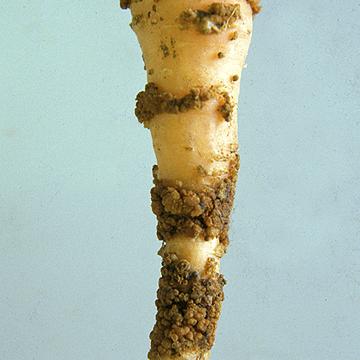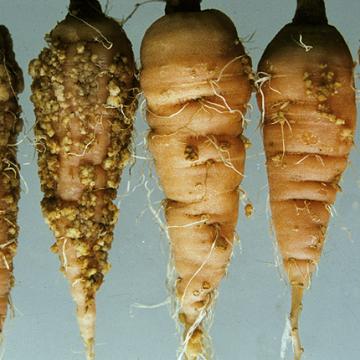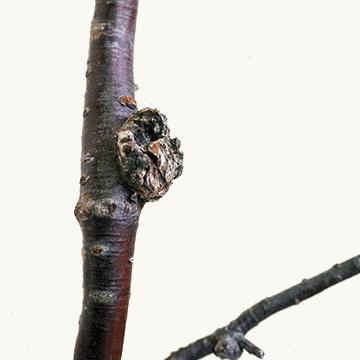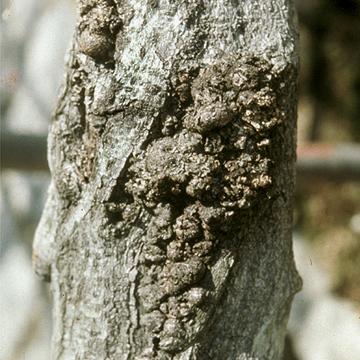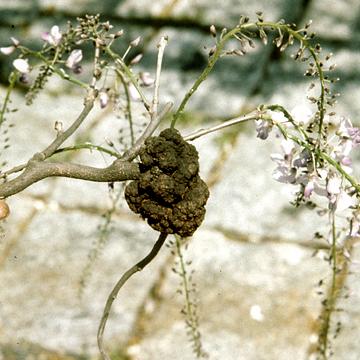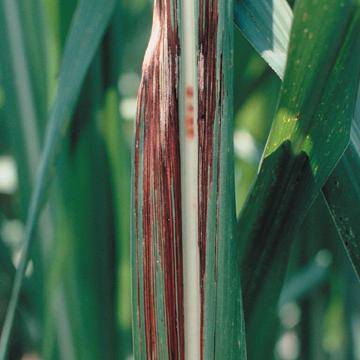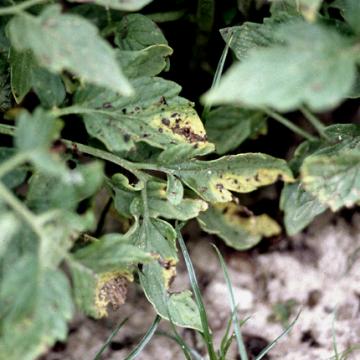DISEASE: Bacterial gall
HOST: Carrot
Root with many galls of different sizes.
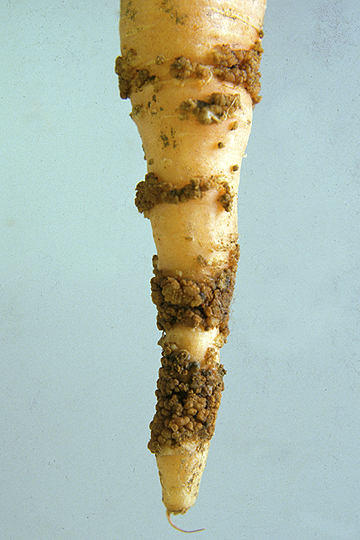
Bacterial gall | Carrot
DISEASE: Bacterial gall
HOST: Carrot (Daucus carota)
PATHOGEN: Rhizobacter dauci
SOURCE: H. Kuwata
DISEASE: Bacterial gall
HOST: Carrot
Galls caused from inoculation of injured roots (left two) and uninjured roots (center two). Uninjured, noninoculated root (right).
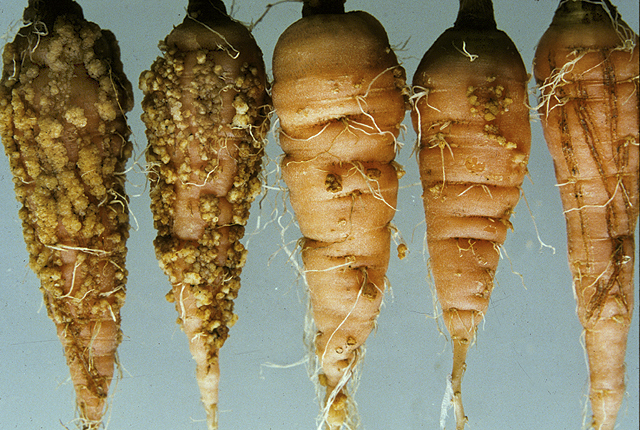
Bacterial gall | Carrot
DISEASE: Bacterial gall
HOST: Carrot (Daucus carota)
PATHOGEN: Rhizobacter dauci
SOURCE: M. Goto
DISEASE: Bacterial gall
HOST: Cherry
Small gall on twig.
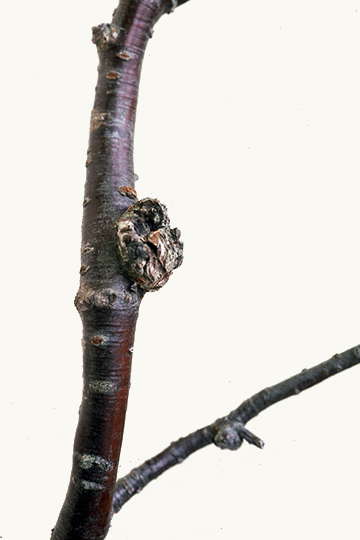
Bacterial gall | Cherry
DISEASE: Bacterial gall
HOST: Cherry (Prunus avium)
PATHOGEN: Pseudomonas syringae pv. cerasicola
SOURCE: H. Kamiunten, M. Goto
DISEASE: Bacterial gall
HOST: Wisteria (Japanese wisteria)
Multiple galls on trunk.
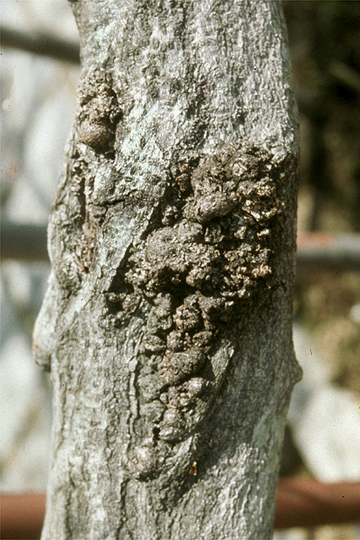
Bacterial gall | Wisteria (Japanese wisteria)
DISEASE: Bacterial gall
HOST: Wisteria (Japanese wisteria) (Wisteria floribunda)
PATHOGEN: Pantoea agglomerans pv. millettiae
PATHOGEN SYNONYM: Erwinia herbicola pv. millettiae
SOURCE: M. Goto
DISEASE: Bacterial gall
HOST: Wisteria (Japanese wisteria)
Gall on branch.
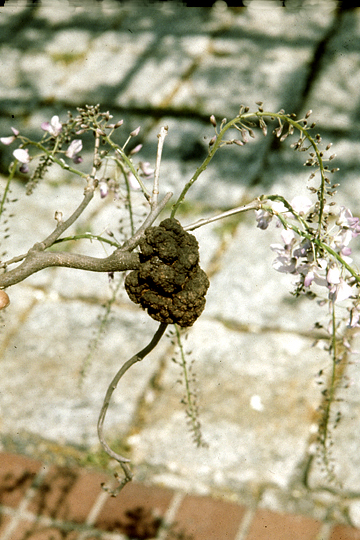
Bacterial gall | Wisteria (Japanese wisteria)
DISEASE: Bacterial gall
HOST: Wisteria (Japanese wisteria) (Wisteria floribunda)
PATHOGEN: Pantoea agglomerans pv. millettiae
PATHOGEN SYNONYM: Erwinia herbicola pv. millettiae
SOURCE: M. Goto
DISEASE: Red stripe (Top rot)
HOST: Sugarcane
Symptoms of disease are long, narrow, and sharply delineated red stripes. Top rot, another stage, may occur with or without red stripes.
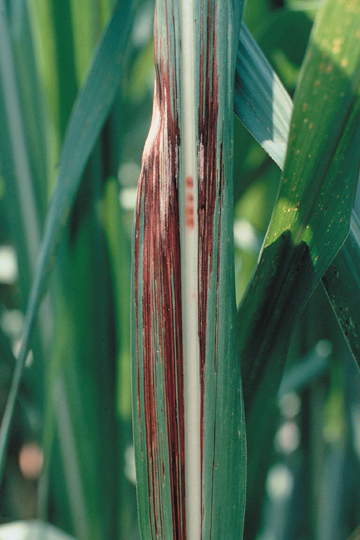
Red stripe (Top rot) | Sugarcane
DISEASE: Red stripe (Top rot)
HOST: Sugarcane (Saccharum officinarum)
PATHOGEN: Acidovorax avenae
PATHOGEN SYNONYM: Acidovorax avenae subsp. avenae
SOURCE: APS
DISEASE: Syringae leaf spot
HOST: Tomato
Leaves with brown necrotic lesions and chlorotic margins. Symptoms vary greatly among cultivars. Some have black or brown lesions with bright yellow, chlorotic areas and others do not have yellowing.
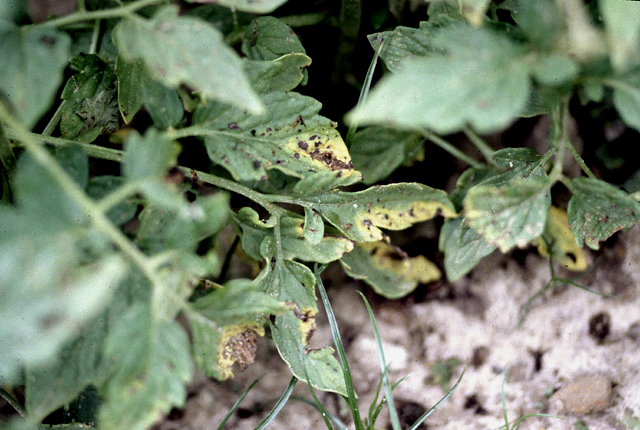
Syringae leaf spot | Tomato
DISEASE: Syringae leaf spot
HOST: Tomato (Lycopersicon esculentum)
PATHOGEN: Pseudomonas syringae pv. syringae
SOURCE: R. Gitaitis


